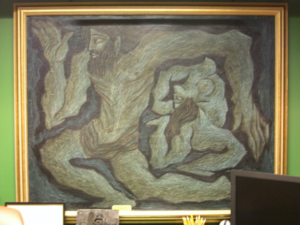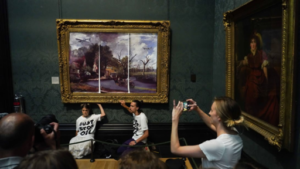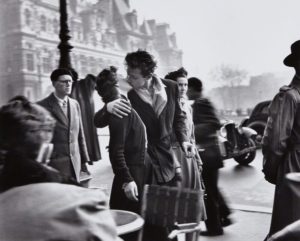Sometimes You Get It Right…
And When You Do, Why Not Crow About It?!

I bought this painting 30 years ago in a yard sale from a neighbor, who was Pakistani, as he was leaving the housing development we lived in then. I didn’t know the artist, but I very much liked the painting, and paid $5,000 for it.
A year later, my ex-neighbor called me and offered to repurchase the painting for $6,000. I declined. Every few years, he called me anew, making consecutively higher offers. The last one I turned down was, I think, $20,000. At that point, I decided to do some research on the artist. (Not easy. No Google then.) I discovered that he was an important Pakistani modernist. His name is Sadequain Naqqash. His work hangs in the Lahore Museum, the most important art museum in Pakistan, as well as dozens of other major museums around the world.
Last week, Suzanne, my partner in Ford Fine Art, told me that one of his pieces, similar to but smaller than mine, had recently sold at Artcurial in Paris for $146,000 (with buyer’s premium). I got online and did some checking on my own. Another piece of his sold recently for almost a quarter of a million dollars.
Wow! Am I smart, or what?!
Things like this have rarely happened in the art world. And these days, thanks to the internet, they almost never do.
But when it happens, it’s hard not to brag about it. So, there you go.







